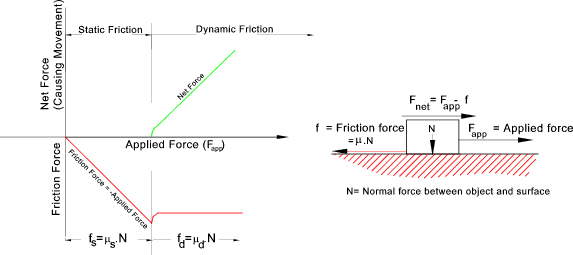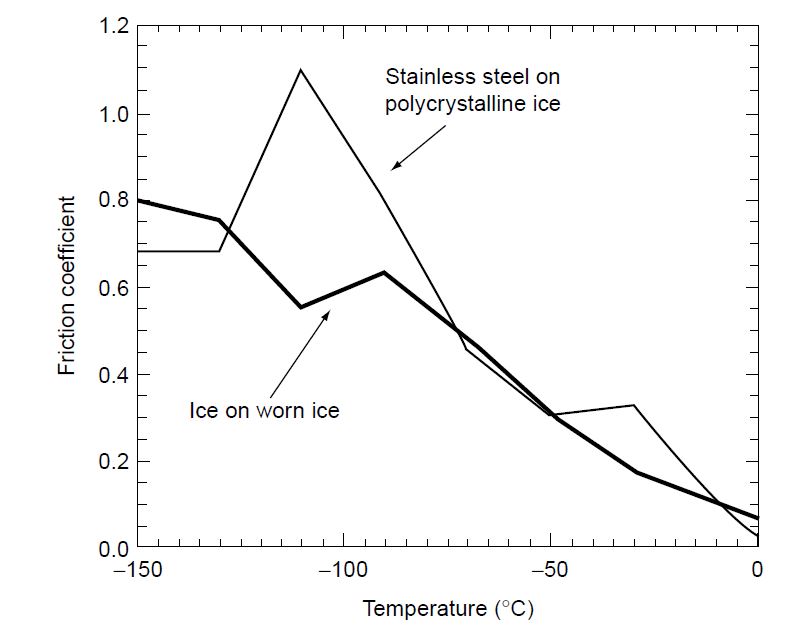Below are provided a small number of values showing approximate values of friction coefficients to be used for steel screw fastened connections.
Coefficient of friction granite on steel.
The following friction coefficients shall be considered in calculating the sliding friction forces.
Experimentally obtaining values for the total distance traveled and for the initial velocity of the curling stone with the aid of nih imaging we calculate the coefficient of kinetic friction for curling ice.
Coefficient of friction to 0 25 to 0 3.
Coefficient of sliding friction for most rocks varies between 0 8 and 0 5.
F f frictional force n lb.
μ static μ s or kinetic μ k frictional coefficient.
The coefficient of static friction typically denoted as μ s is usually higher than the coefficient of kinetic friction.
The value of μ s is generally higher than the value of μ k for a given combination of materials.
The friction force is the force exerted by a surface when an object moves across it or makes an effort to move across it.
Brick masonry on rock.
The coefficient of kinetic friction for curling ice.
For example static friction can prevent an object from sliding down a sloped surface.
Steel to steel.
Friction and wear characteristics of steel on rock under water and oil based lubricated sliding conditions.
The coefficients of friction are independent of the surface area in contact.
Glass on glass 0 4 rubber on concrete 0 75 steel on steel 0 55 angle of internal friction rock 30 sand 30 40 gravel 35 silt 34 clay 20 loose sand 30 35 medium sand 40.
A value of 0 60 would be a good number for general use.
However it is possible to find tables in the literature for friction coefficients between various materials.
Tribology materials surfaces interfaces.
Coefficients of friction between materials are best determined through testing.
The coefficient of kinetic friction is generally lower than the coefficient of static friction on the same surface.
Static friction is friction between two or more solid objects that are not moving relative to each other.
Steel to teflon plate.
First you tape the low g accelerometer on the end of the surface in this case a slab of granite.
F f μ n 1.
Where μ s is the coefficient of static friction and μ k is the coefficient of kinetic friction.
The coefficient of friction is required in calculating tightening torques and resulting bolt tensile forces and stress and in calculating the resulting friction between the connected surfaces.
Ref links 1 below the american gear manufactures association agma recommends a value of between 0 12 0 15 for hydraulically expanded hubs and 0 15 0 20 for shrink or press fit hubs.
Concrete to soil rock.
Concrete to steel.
These companies can provide surface coating fluids containing particles to increase the coefficient of friction i e.







